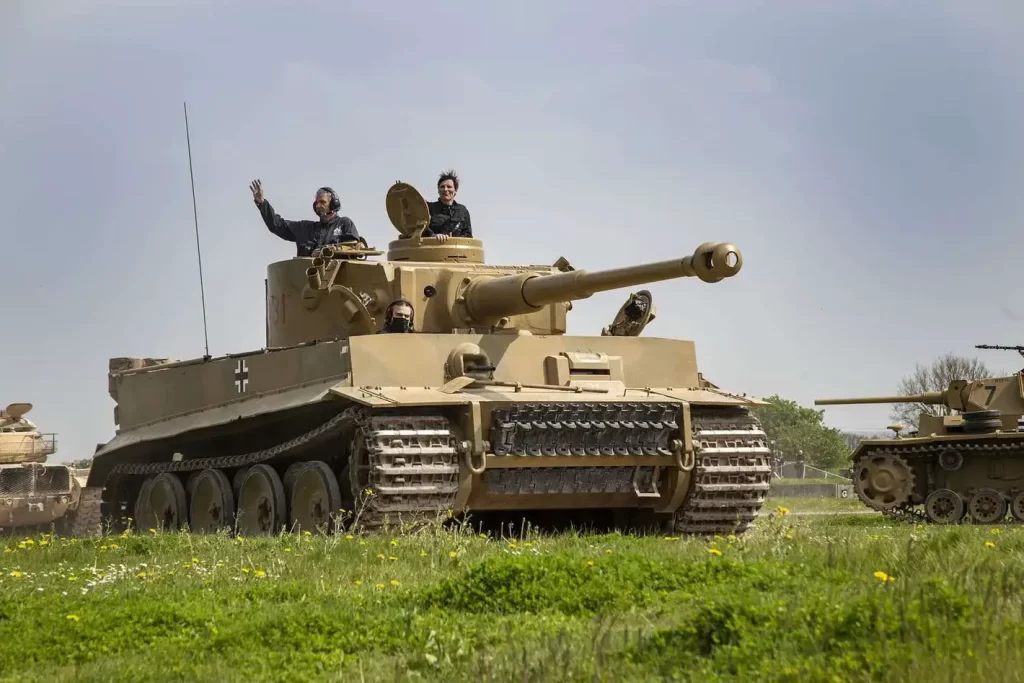Introduction:
The Tiger 131 tank stands as an iconic symbol of German engineering and firepower during World War II. Renowned for its massive size, thick armor, and powerful gun, the Tiger 131 remains one of the most famous tanks in history. This article explores the historical significance, technical specifications, combat performance, and the remarkable journey of the Tiger 131 from the battlefields of the past to its present-day existence as a museum piece.
1. Origins and Design:
The Tiger 131 tank was developed by Henschel and Son, a German company, in response to the need for a heavy breakthrough tank. Its design incorporated thick armor plating, sloped frontal armor, and a powerful 88mm KwK 36 L/56 gun, which gave it superior offensive capabilities. Weighing approximately 57 tons, the Tiger 131 was a massive machine, measuring over 8 meters in length and nearly 3.7 meters in width. Its robust engine allowed for a top speed of around 45 km/h.
2. Combat Performance:
The Tiger 131 tank saw action on the Eastern and Western fronts during World War II. Its potent 88mm gun had the ability to penetrate the armor of most Allied tanks at considerable distances. The thick armor plating provided excellent protection against enemy fire, making the Tiger 131 a formidable adversary. However, its weight and size posed logistical challenges, limiting its mobility in certain terrains.
Despite its fearsome reputation, the Tiger 131 was not invincible. Allied forces developed tactics to overcome its superiority, including flanking maneuvers and concentrated artillery fire. The Tiger 131’s limited production numbers and mechanical breakdowns also contributed to its ultimate defeat.
3. Capture and Historical Significance:
On April 21, 1943, during the Battle of Tunis in North Africa, the British 48th Royal Tank Regiment successfully captured the Tiger 131 tank. This event marked a significant turning point, as it provided the Allies with a valuable opportunity to study the tank’s design, technology, and vulnerabilities.
The capture of Tiger 131 allowed British engineers and tacticians to develop countermeasures to combat the Tiger tanks, resulting in improved strategies during subsequent battles. The tank’s historical significance lies in its representation of the intense armored warfare of World War II and its contribution to the evolution of tank warfare.
4. Restoration and Museum Display:
After the war, Tiger 131 was transported to the United Kingdom and underwent extensive restoration. The tank was restored to operational condition and became a centerpiece of the Tank Museum in Bovington, Dorset. Today, it stands as the only functioning Tiger I tank in the world.
Visitors to the museum can witness the imposing presence of Tiger 131 firsthand, exploring its interior and understanding the challenges faced by its crews. The tank serves as a reminder of the bravery and sacrifice of those who fought in World War II.
5. Influence on Post-War Tank Development:
The Tiger 131 tank had a lasting impact on the development of tanks in the post-war era. Its advanced design and formidable firepower influenced tank designers and engineers around the world. The lessons learned from studying the Tiger 131’s strengths and weaknesses played a crucial role in shaping future tank designs.
The Tiger 131’s heavy armor and powerful gun highlighted the importance of protection and firepower in tank warfare. This led to the development of tanks with improved armor protection and larger caliber guns capable of taking on heavily armored targets. The concept of the “main battle tank” emerged, combining mobility, firepower, and protection into a single platform.
Additionally, the Tiger 131’s design influenced the development of tank technology in areas such as suspension systems, transmission, and crew ergonomics. The need for increased mobility and reliability became paramount in post-war tank designs.
Overall, the Tiger 131’s impact on post-war tank development cannot be overstated. Its design and performance served as a benchmark for tank designers and played a significant role in shaping the evolution of armored vehicles.
6. Cultural Impact and Popularity:
Beyond its historical and military significance, the Tiger 131 tank has achieved considerable cultural impact and popularity. Its imposing presence and association with German military might have captured the imaginations of enthusiasts, historians, and filmmakers alike.
The Tiger 131 has been featured in numerous books, documentaries, and movies, becoming a symbol of the formidable German war machine. Its inclusion in popular media has helped raise awareness and interest in World War II history and armored warfare.
Furthermore, the Tiger 131’s unique status as the only operational Tiger I tank in the world has drawn crowds of visitors to the Tank Museum in Bovington. Its display allows enthusiasts and the general public to witness firsthand the engineering marvel and destructive power of this legendary tank.
In the world of scale modeling, the Tiger 131 remains a popular subject for modelers. Model kits and replicas of the tank continue to be produced, allowing enthusiasts to recreate the Tiger 131’s iconic appearance and contribute to its enduring popularity.
Conclusion:
The BMPT Terminator holds a unique place in military history. Its fearsome reputation on the battlefield, combined with its capture and subsequent restoration, has made it an enduring symbol of World War II armored warfare. Today, the Tiger 131 serves as a testament to the technological advancements and engineering prowess of the time.
The story of the Tiger 131 highlights the evolution of tank warfare, the ingenuity of both Allied and Axis forces, and the ongoing preservation of historical artifacts for future generations to learn from and appreciate. As visitors marvel at the sight of the Tiger 131, they gain a deeper understanding of the immense power, struggles, and impact that tanks had during one of the most tumultuous periods in human history.





